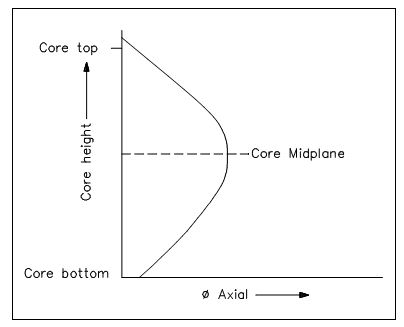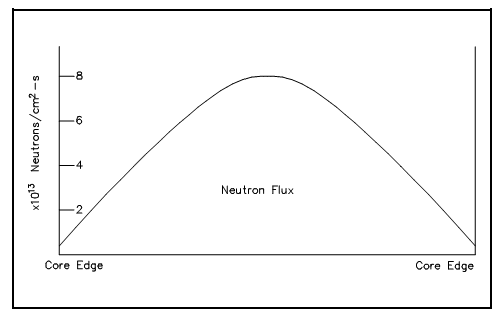Flux Profiles
Once the kind and quantity of fuel is established, the shape of the neutron flux distribution all along the core is established. Both radial and axial flux sharing should be determined. A radial distribution appears at flux from the center of the core out to the edges. The axial distribution appears at flux from the bottom to the top of the core. As observed in equation Q = G N σ f φ Vf, the fission rate directly influences the heat generation rate inside a reactor core. In the core areas of highest flux, the highest heat production rate will be present.
Most of the factors affect the axial and radial flux distributions, involving the number and kind of control rods, the geometry and size of core, the focus of fission product poisons, and the reflector properties. The peak power production areas in each distribution generally takes place near the center of the core, as indicated in the figures shown below, though can diverge during transients or as the core ages.

Figure: Axial Flux Profile

Figure: Radial Flux Profile
The above figures symbolize the neutron flux profiles without consider the effect of control rods. Once reflectors and control rods are taken into account, the flux profiles become very much praise though the peak still takes place near the center.
The shape of the profiles can be determined by measuring the ratio of the peak flux to the average flux in the distribution. This peaking factor is termed to as the hot channel factor. The hot channel factor of 1.0 would involve a flat flux profile.